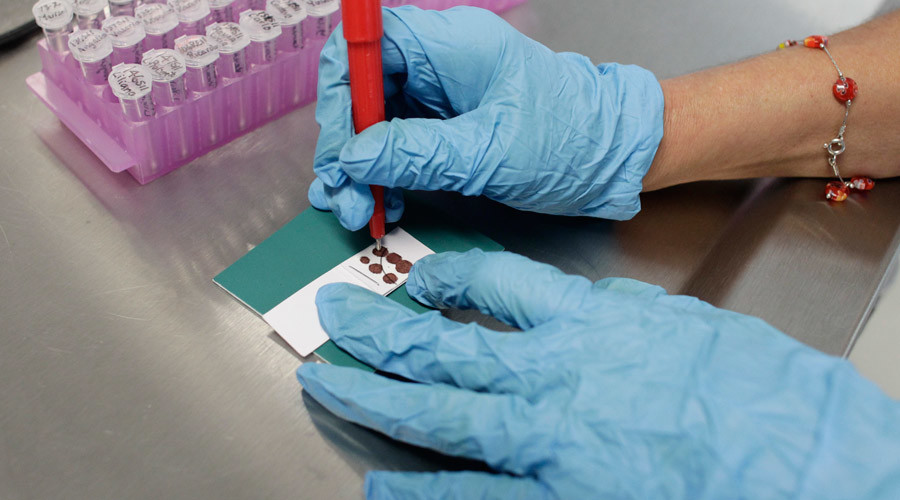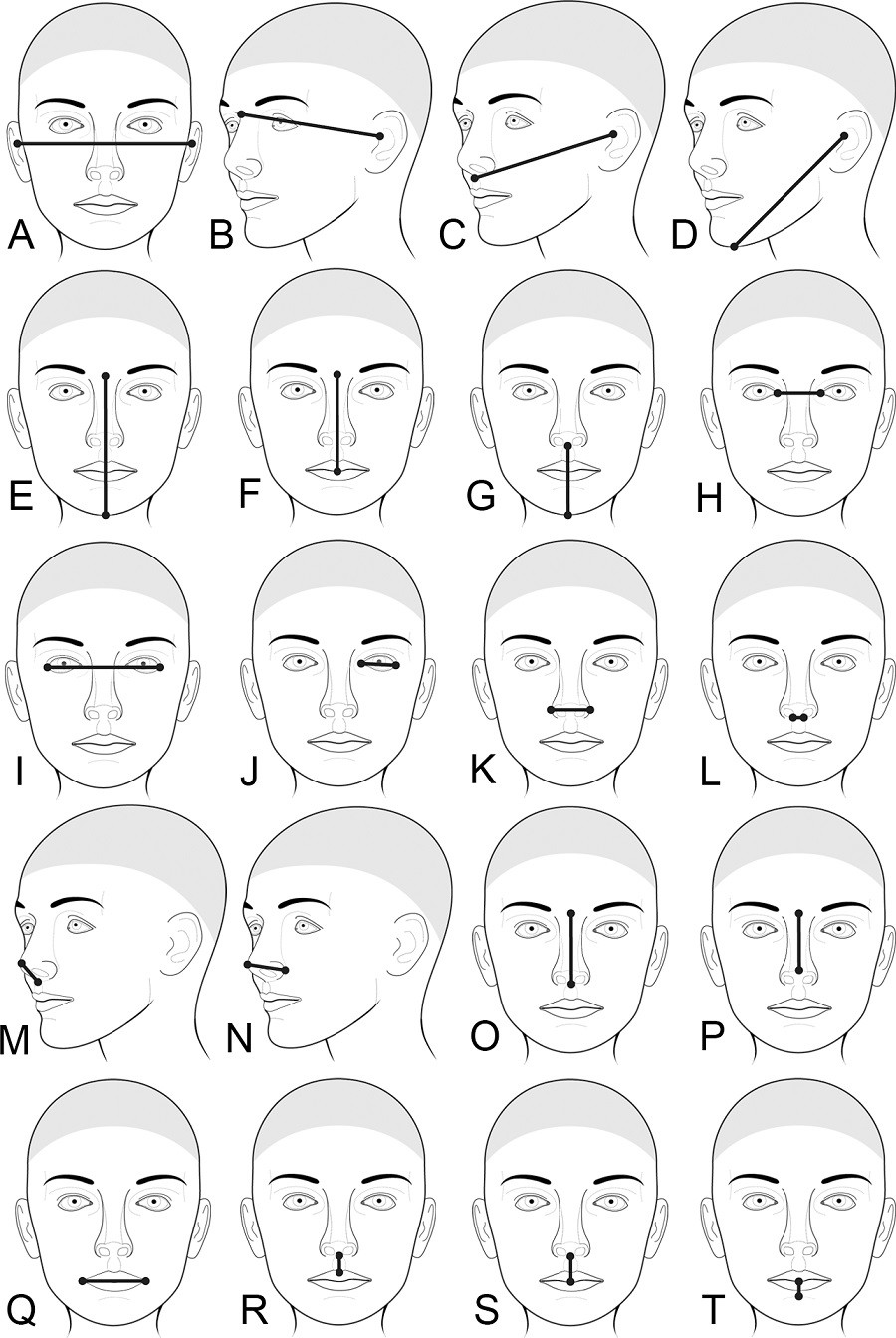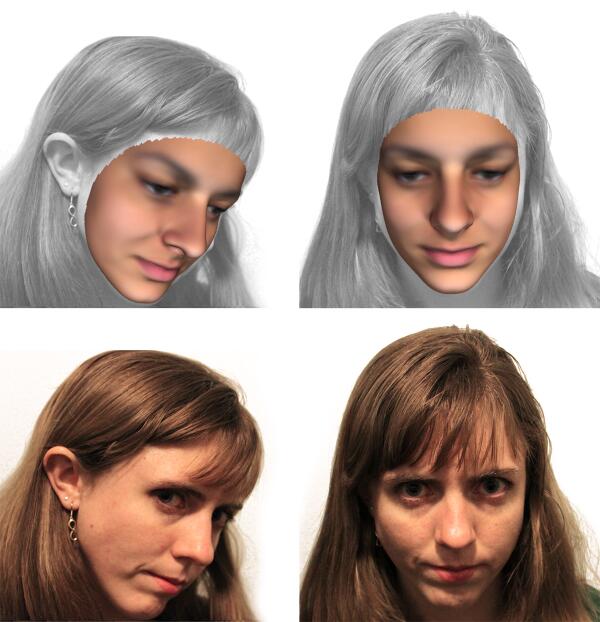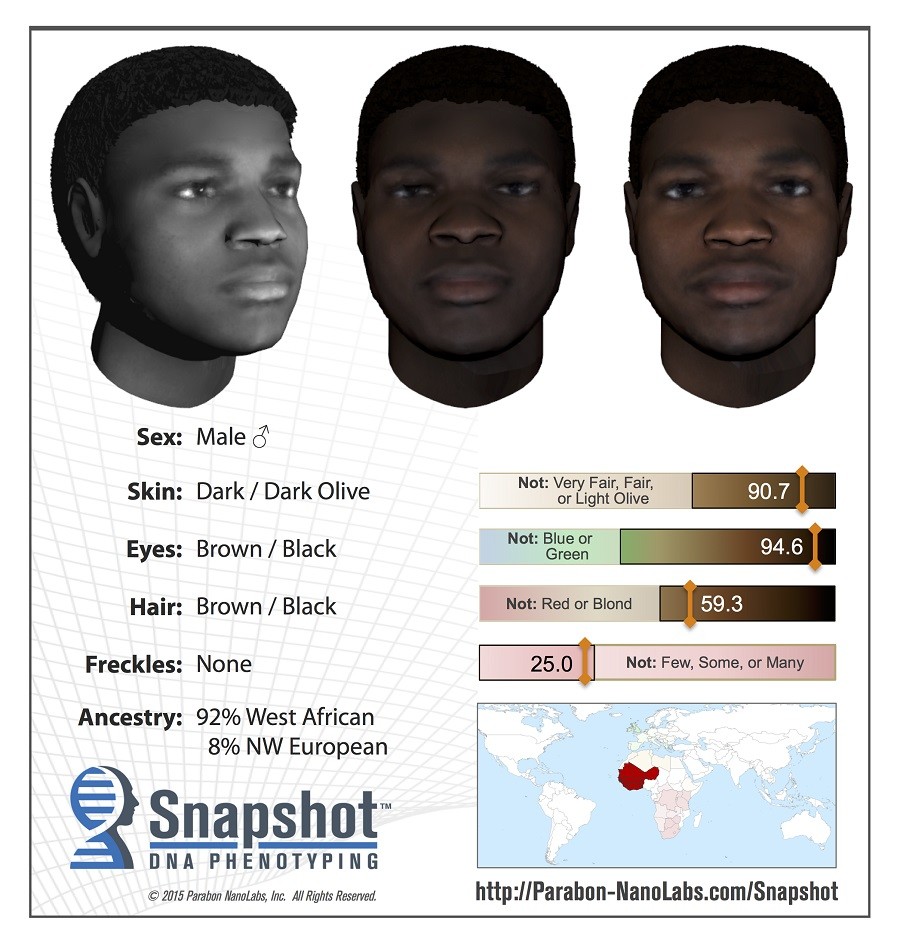Police take step toward creating ‘wanted’ posters from DNA, thanks to new study
....Or
how systemic media, systemic, trully UNevolved science and technology
and malevolent governance, pretending to be high tech etal and
camouflaging as Humans' saviors, are just used against Humanity's
FREEDOM of action-will-choice, through any possible means they can grab
and unethically utilize!... And who can tell what the quid pro quo for 'ancestry.com' was..
m.l.p.
Get short URL

The team then employed genotyping to compare the traits from their sample group to nearly a million variations across the genome to find any associations.

“What is exciting is that many of these associations involve chromosomal regions harboring genes with known craniofacial function,” said study co-author Seth Weinberg, an assistant professor at Pitt’s School of Dental Medicine, according to The Mirror. “Such findings can provide insights into the role genes play in the formation of the face and improve our understanding of the causal factors leading to certain craniofacial birth defects."
Find RT America in your area: http://rt.com/where-to-watch/
Or watch us online: http://rt.com/on-air/rt-america-air/
Like us on Facebook http://www.facebook.com/RTAmerica
Follow us on Twitter http://twitter.com/RT_America...}
The study, which was published on the website of the PLOS Genetics journal on Thursday, built on a 2014 study by Mark Shriver, a professor of biological anthropology at Pennsylvania State University, and Peter Claes, a post-doc researcher at the Catholic University of Leuven in Belgium, published in the same journal, called “Modeling 3D Facial Shape from DNA.”
Such findings can help not just with understanding birth defects and “syndromes in which the face is affected,” but also with fighting crime. As far back as the 2004 Madrid train bombings, DNA has been used to find out more about suspects. In that case, forensic geneticists were able to correctly deduce the ancestry of a suspect, New Scientist reported in 2009.
Since then, the technology and geneticists’ knowledge have only improved. When Shriver and Claes published their work in 2014, New Scientist asked them to predict the appearance of one of the magazine’s former reporters based on a scan of her DNA performed by the company 23andMe.
 New Scientist
Επαληθευμένος λογαριασμός
New Scientist
Επαληθευμένος λογαριασμός
how well they match reality

His prediction may have been far too conservative: Last January, police in Columbia, South Carolina, released a computer-generated image of a suspect based only on DNA found at the scene. It was the first time a sketch was built on genetics, according to the New York Times.
Parabon NanoLabs, which created the image, has offered its services to other law enforcement agencies. It currently has 19 more images of suspects in its composite gallery.

Yet the researchers at Pitt believe that their study has brought forensics closer to that goal.
"Our ability to connect specific genetic variants to ubiquitous facial traits can inform our understanding of normal and abnormal craniofacial development, provide potential predictive models of evolutionary changes in human facial features, and improve our ability to create forensic facial reconstructions from DNA," they wrote.




